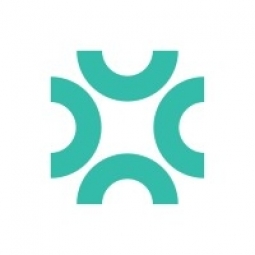Streamlined Data Entry and Simplified Scenario Planning Saves Time and Adds Value to Decision Makers

Customer Company Size
Large Corporate
Region
- America
Country
- United States
Product
- Centage
Tech Stack
- Excel
- Sage CPSI
Implementation Scale
- Enterprise-wide Deployment
Impact Metrics
- Productivity Improvements
- Cost Savings
Technology Category
- Analytics & Modeling - Predictive Analytics
Applicable Industries
- Healthcare & Hospitals
Applicable Functions
- Business Operation
Use Cases
- Predictive Replenishment
Services
- Training
About The Customer
Mountain View Hospital is a healthcare facility located in Idaho Falls, Idaho. Founded in 2002, the hospital has grown to encompass a wide array of specialty practices and services in addition to its 43-inpatient-bed hospital. The hospital offers several healthcare services to the region, including an on-site urgent-care service, speech and language therapy, advanced wound care, an infusion center, and a health and fitness academy. The hospital is also actively involved in the community, sponsoring dozens of charities each year with events ranging from summer concerts to toy drives. Recently, Mountain View surpassed the 1,000-employee mark and currently budgets for just over 60 departments and cost centers.
The Challenge
Mountain View Hospital, a healthcare facility in Idaho Falls, Idaho, was facing challenges with its budgeting and forecasting process. The hospital, which has over 1,000 employees and more than 60 departments and cost centers, was using Excel for these processes. However, as the hospital continued to grow, Excel became increasingly difficult to use, especially when adding new acquisitions or modifying projections. Simple modifications posed significant risk of errors due to the necessary changes in formulas and formats. The hospital's expansive budget spreadsheet had grown to over 40 tabs, making it impossible to perform meaningful what-if scenarios or analyze the data in a detailed manner. If the hospital continued to use Excel and continued to grow, it would likely have needed additional staff.
The Solution
Mountain View Hospital began evaluating several budgeting and forecasting solutions. They were initially attracted to an industry-specific option, but quickly shifted their interest to Centage after seeing what it had to offer. Centage's clean, user-friendly interface and comprehensive what-if scenario planning would enable the hospital to uncover options and considerations that likely would have gone unnoticed before. Additionally, Centage's robust analytics capabilities would provide the necessary metrics and the ability to mold report presentations to the format that the management team was accustomed to, easing the adoption process. The budget was loaded into the solution along with several prior year actuals, providing immediate value by giving access to variance analyses and reporting capabilities that they weren’t able to capture before.
Operational Impact
Quantitative Benefit

Case Study missing?
Start adding your own!
Register with your work email and create a new case study profile for your business.
Related Case Studies.

Case Study
Hospital Inventory Management
The hospital supply chain team is responsible for ensuring that the right medical supplies are readily available to clinicians when and where needed, and to do so in the most efficient manner possible. However, many of the systems and processes in use at the cancer center for supply chain management were not best suited to support these goals. Barcoding technology, a commonly used method for inventory management of medical supplies, is labor intensive, time consuming, does not provide real-time visibility into inventory levels and can be prone to error. Consequently, the lack of accurate and real-time visibility into inventory levels across multiple supply rooms in multiple hospital facilities creates additional inefficiency in the system causing over-ordering, hoarding, and wasted supplies. Other sources of waste and cost were also identified as candidates for improvement. Existing systems and processes did not provide adequate security for high-cost inventory within the hospital, which was another driver of cost. A lack of visibility into expiration dates for supplies resulted in supplies being wasted due to past expiry dates. Storage of supplies was also a key consideration given the location of the cancer center’s facilities in a dense urban setting, where space is always at a premium. In order to address the challenges outlined above, the hospital sought a solution that would provide real-time inventory information with high levels of accuracy, reduce the level of manual effort required and enable data driven decision making to ensure that the right supplies were readily available to clinicians in the right location at the right time.

Case Study
Gas Pipeline Monitoring System for Hospitals
This system integrator focuses on providing centralized gas pipeline monitoring systems for hospitals. The service they provide makes it possible for hospitals to reduce both maintenance and labor costs. Since hospitals may not have an existing network suitable for this type of system, GPRS communication provides an easy and ready-to-use solution for remote, distributed monitoring systems System Requirements - GPRS communication - Seamless connection with SCADA software - Simple, front-end control capability - Expandable I/O channels - Combine AI, DI, and DO channels

Case Study
Driving Digital Transformations for Vitro Diagnostic Medical Devices
Diagnostic devices play a vital role in helping to improve healthcare delivery. In fact, an estimated 60 percent of the world’s medical decisions are made with support from in vitrodiagnostics (IVD) solutions, such as those provided by Roche Diagnostics, an industry leader. As the demand for medical diagnostic services grows rapidly in hospitals and clinics across China, so does the market for IVD solutions. In addition, the typically high cost of these diagnostic devices means that comprehensive post-sales services are needed. Wanteed to improve three portions of thr IVD:1. Remotely monitor and manage IVD devices as fixed assets.2. Optimizing device availability with predictive maintenance.3. Recommending the best IVD solution for a customer’s needs.

Case Study
HaemoCloud Global Blood Management System
1) Deliver a connected digital product system to protect and increase the differentiated value of Haemonetics blood and plasma solutions. 2) Improve patient outcomes by increasing the efficiency of blood supply flows. 3) Navigate and satisfy a complex web of global regulatory compliance requirements. 4) Reduce costly and labor-intensive maintenance procedures.

Case Study
Cloud-based healthcare solution for Royal Philips
Royal Philips wanted to launch its cloud-based healthcare solution HealthSuite Digital Platform in China to deliver services to help cope with challenges related to urbanization and population growth. Philips wanted to achieve this goal by combining mobile, cloud computing and big data technologies. To bring this platform and product to market, Philips required cloud computing and local technical service capabilities in China, in addition to a flexible IT infrastructure that could handle user requests.







